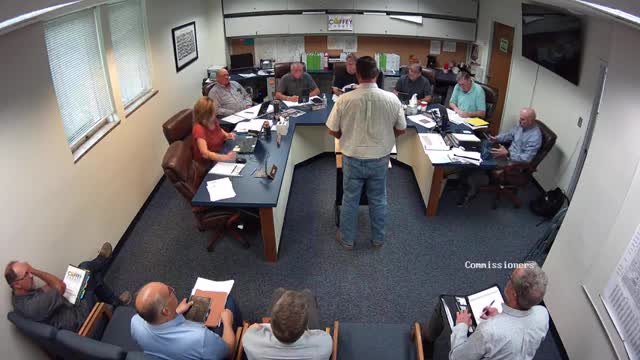Engineers Discuss Airport Drainage Solutions and KDOT Approval Delays
September 22, 2025 | Coffey County, Kansas
This article was created by AI summarizing key points discussed. AI makes mistakes, so for full details and context, please refer to the video of the full meeting. Please report any errors so we can fix them. Report an error »

The Coffey County government meeting held on September 22, 2025, focused on updates regarding ongoing construction projects, particularly phases 2 and 9 of a significant infrastructure initiative. The meeting began with Ian providing a positive report on phase 2, noting that recent pipe installations were successful and that compaction levels appeared satisfactory. He expressed optimism about the potential for asphalt application by the end of the month, contingent on favorable weather conditions.
Following Ian's update, discussions shifted to the drainage concerns associated with phase 1 and phase 2 of the project. Rick Walker, a senior project manager, elaborated on the drainage plans involving collaboration with the Kansas Department of Transportation (KDOT). He outlined two potential drainage solutions: one involving piping through a berm and another requiring an enclosed system if the first option is not approved by KDOT. Walker indicated that he was awaiting feedback from KDOT regarding the submitted plans and emphasized the importance of maintaining drainage capacity to prevent flooding issues.
Concerns were raised about the initial drainage plan's approval process, with some participants questioning why the plans were not fully vetted before construction commenced. Walker acknowledged that the approval for drainage was not part of the initial land disturbance permit and admitted that better communication with KDOT could have mitigated current issues. He assured attendees that if the berm plan is approved, the additional costs would be minimal, primarily involving a short section of pipe. However, if the enclosed system is required, it would incur significantly higher expenses.
The meeting concluded with a commitment to follow up on KDOT's response and to keep stakeholders informed about the project's progress and any necessary adjustments to the drainage strategy. Overall, the discussions highlighted the importance of effective planning and coordination in infrastructure projects to avoid complications and additional costs.
Following Ian's update, discussions shifted to the drainage concerns associated with phase 1 and phase 2 of the project. Rick Walker, a senior project manager, elaborated on the drainage plans involving collaboration with the Kansas Department of Transportation (KDOT). He outlined two potential drainage solutions: one involving piping through a berm and another requiring an enclosed system if the first option is not approved by KDOT. Walker indicated that he was awaiting feedback from KDOT regarding the submitted plans and emphasized the importance of maintaining drainage capacity to prevent flooding issues.
Concerns were raised about the initial drainage plan's approval process, with some participants questioning why the plans were not fully vetted before construction commenced. Walker acknowledged that the approval for drainage was not part of the initial land disturbance permit and admitted that better communication with KDOT could have mitigated current issues. He assured attendees that if the berm plan is approved, the additional costs would be minimal, primarily involving a short section of pipe. However, if the enclosed system is required, it would incur significantly higher expenses.
The meeting concluded with a commitment to follow up on KDOT's response and to keep stakeholders informed about the project's progress and any necessary adjustments to the drainage strategy. Overall, the discussions highlighted the importance of effective planning and coordination in infrastructure projects to avoid complications and additional costs.
View full meeting
This article is based on a recent meeting—watch the full video and explore the complete transcript for deeper insights into the discussion.
View full meeting
